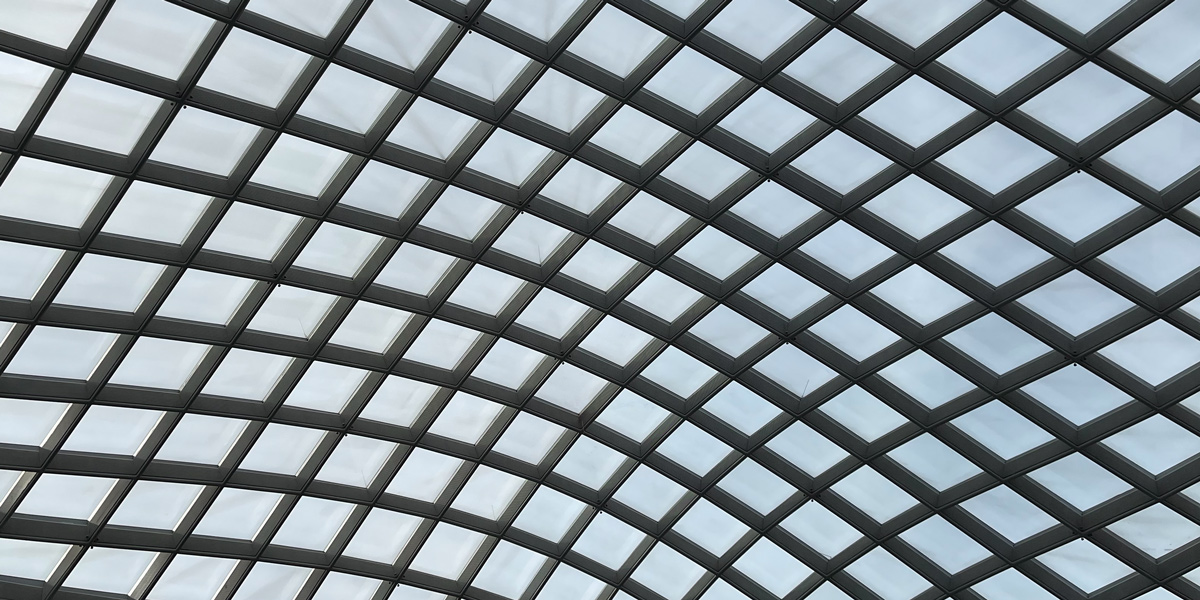A Trip to the National Portrait Gallery
How do you get kids interested in art history? On a recent Saturday morning, I went to Alexandria from Virginia Beach and met my son, Connor, at karate class. After class finished, we picked up one of his friends, Owen, and then went to the Smithsonian National Portrait Gallery. I was about to give it a try.
My idea was to show them some of the distinctions between painting, drawing, printmaking, and photography, and then teach them a simple method whereby they could convey any expression using just two dots and a line. At first, there was some grumbling about going to an art museum, but I said we could go to their top pick—the natural history museum—for the second part of the afternoon. That got them on board.
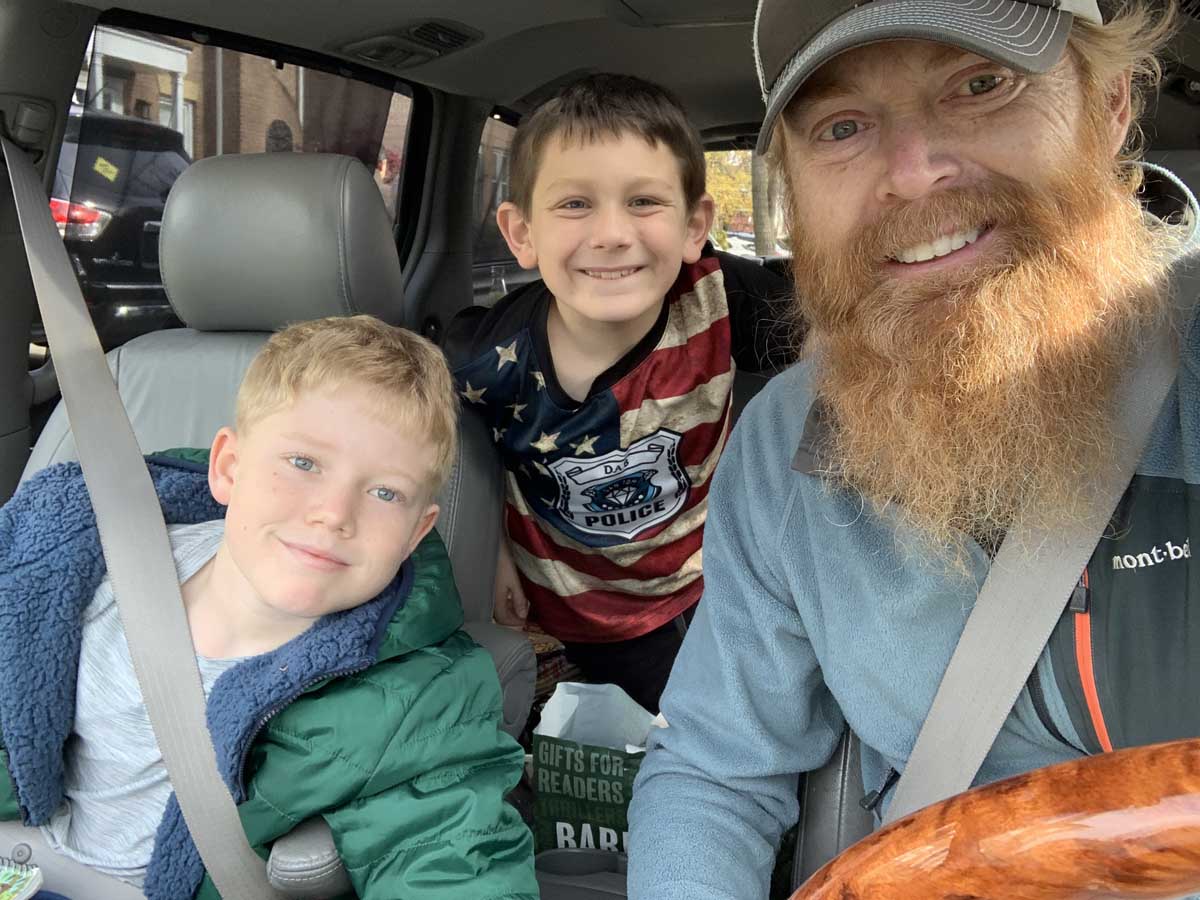
At the National Portrait Gallery, they breezed past the paintings, not noticing much, until I pointed out a painting of some of the American literary greats of the 19th century. There was a key next to the painting with numbers, and they could use that to identify the figures in the painting itself. “See if you can find the guy named Longfellow. What a funny name!” And, “See if you can find the guy named Emerson.” One by one, they found them all. And, that got their interest.
A little further along in the exhibits, I told them to look at the eyes in some different paintings—one from the 1500s, one from the 1700s, and one from the 1800s. Why were the eyes so different? Which ones looked the most realistic? It was an interesting question. They began to see things they didn’t notice before.
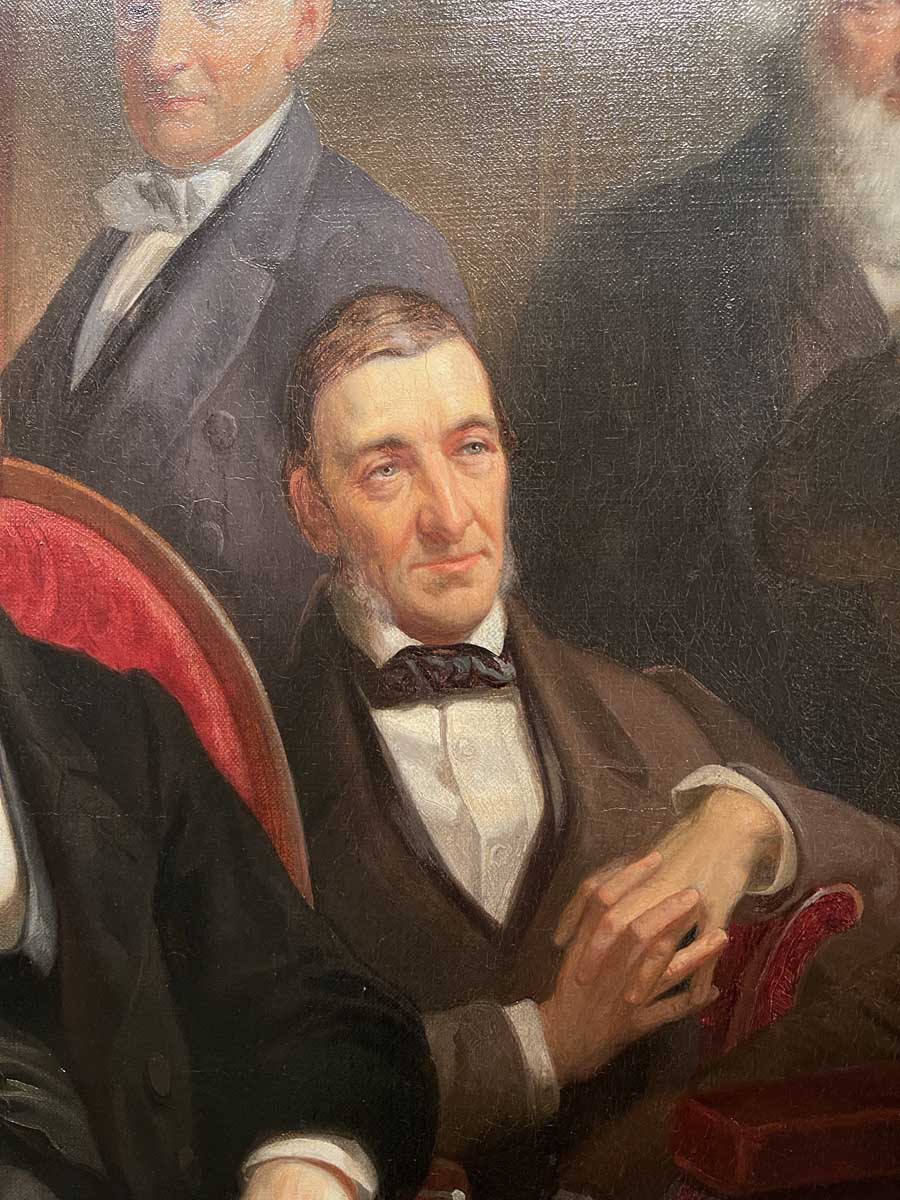
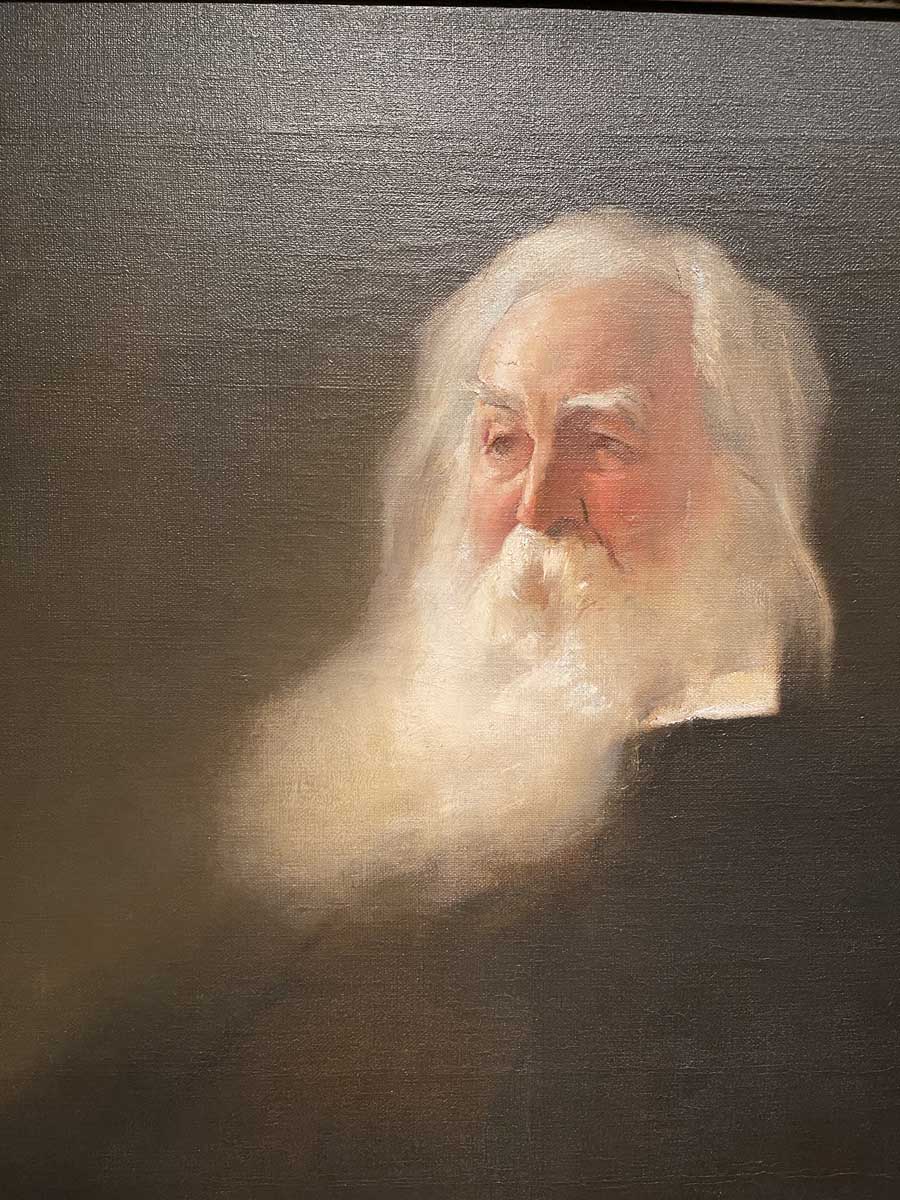
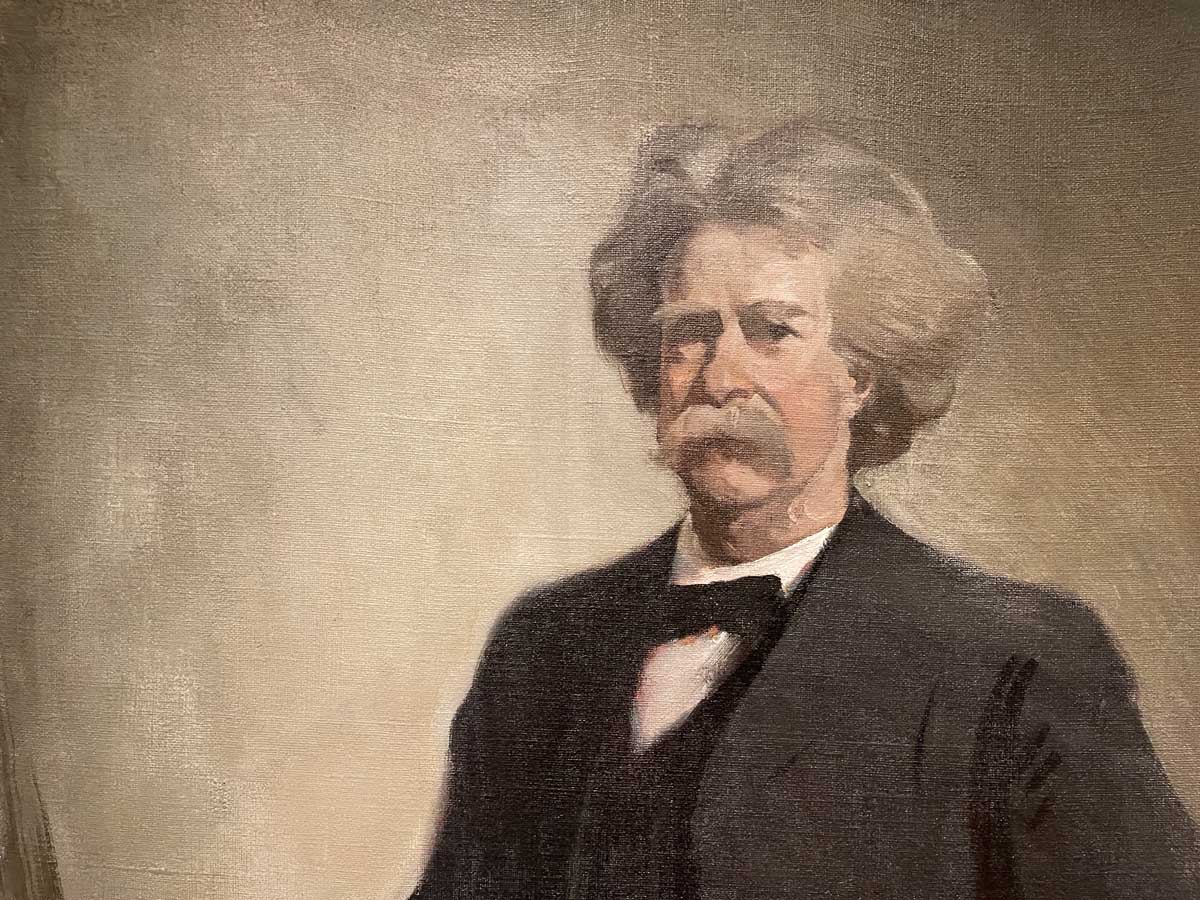
We took a break in the courtyard of the museum—an open turn-of-the-century space covered in a modern glass and steel dome, which allows it to stay comfortable and dry year-round. There was an unusual water feature to one side—a rectangular area of water just millimeters deep. Connor mentioned it to me and asked if I liked the way it looked. “Yeah. I think it’s beautiful,” I said. "What do you think?”
“I like it, too,” he said.
After playing for a while, including some light parkour, sliding across the polished marble slabs around the planted areas, we got down to the art study. I showed them the technique with the two dots and the line. Then, we identified the variables at work in the little system: the distance between the eyes, the distance of the mouth from the eyes, the width of the mouth, the curve of the line for the mouth. Four variables. Then we got to changing the variables in order to convey different expressions. This was all new, and they enjoyed practicing it. We wondered together if there couldn’t be a multivariate equation to define what was happening, and what that equation might look like. Who said art and math don’t mix?
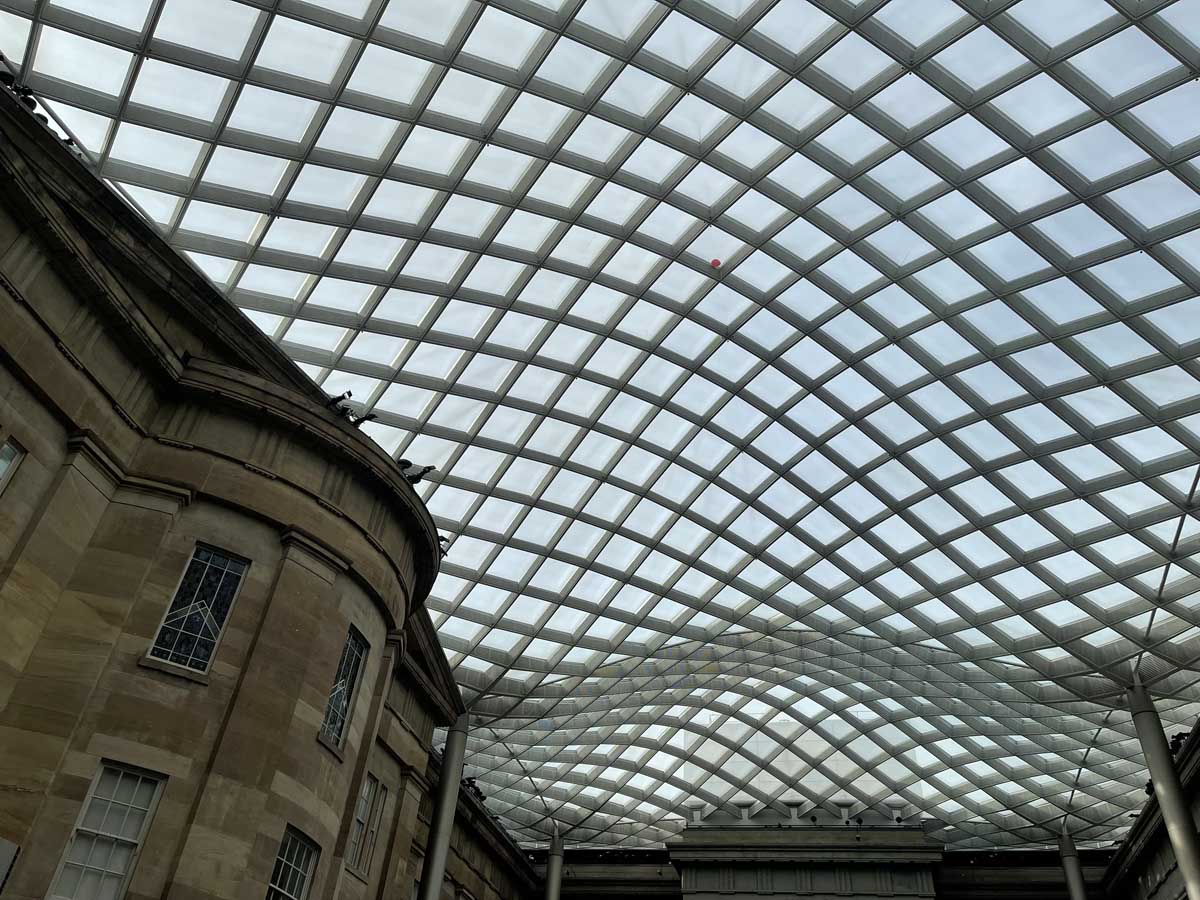
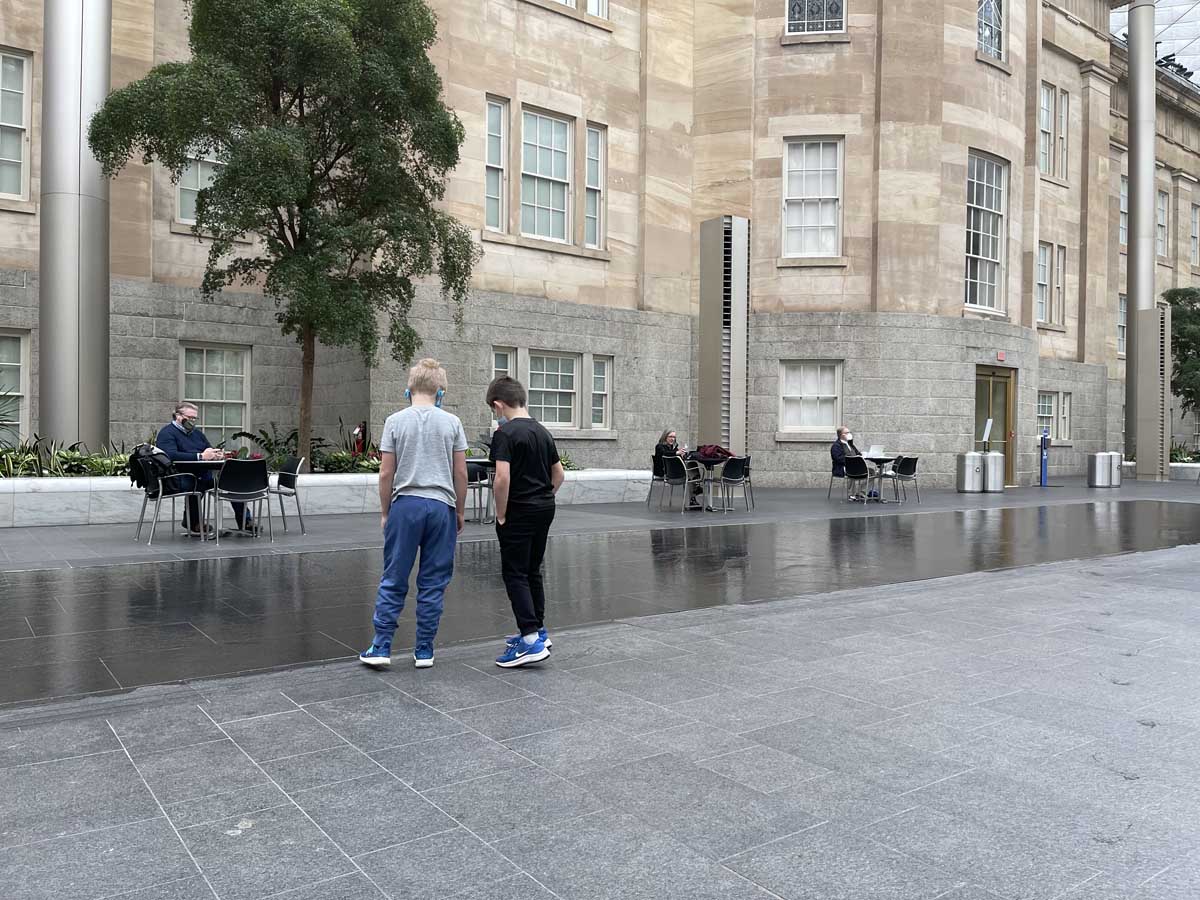
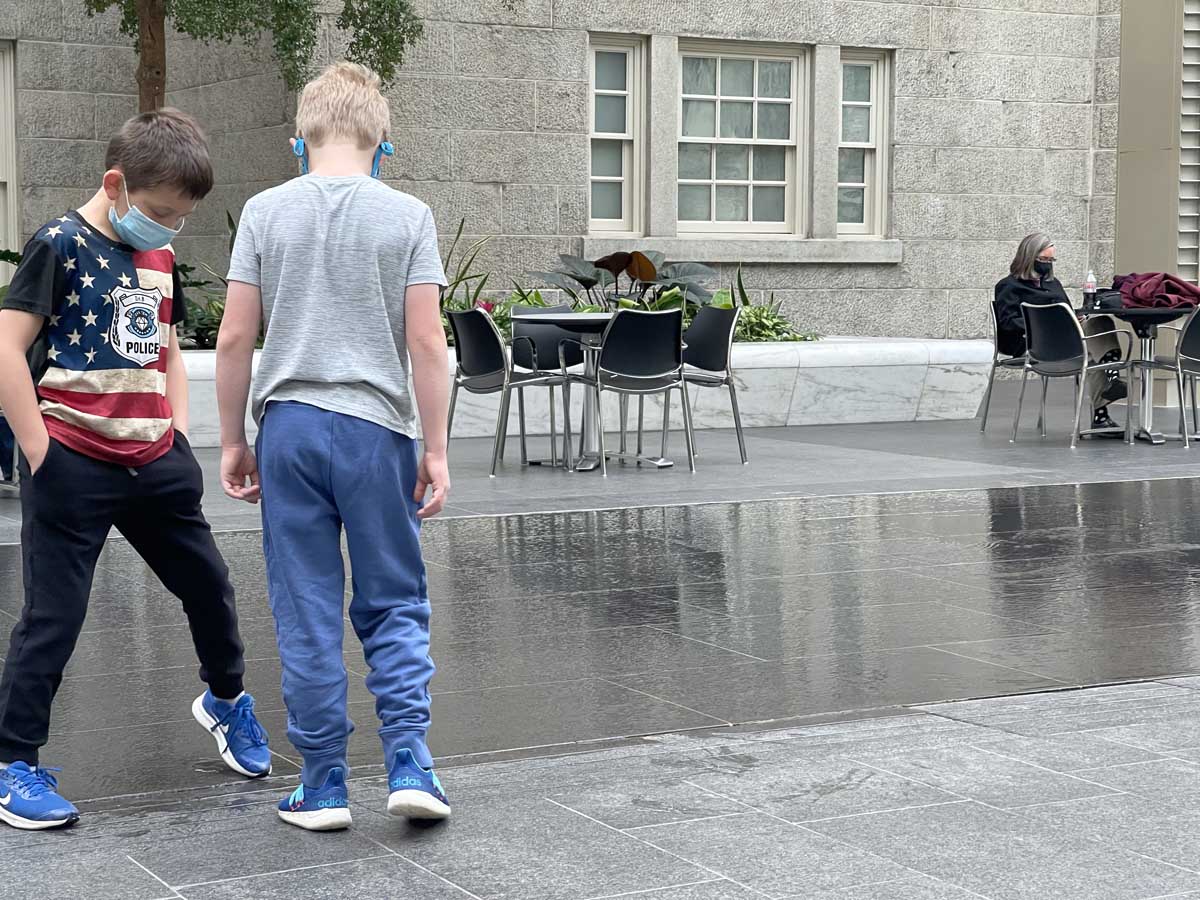
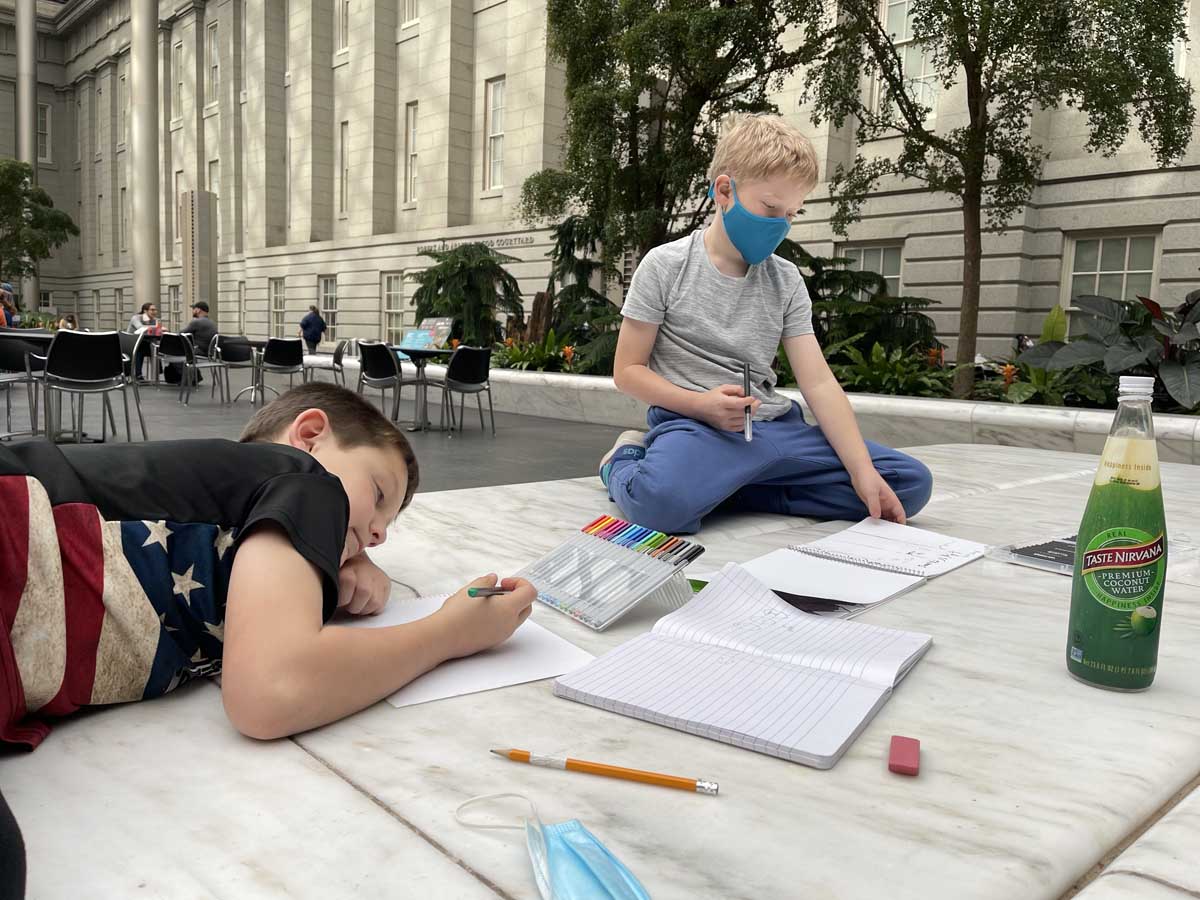
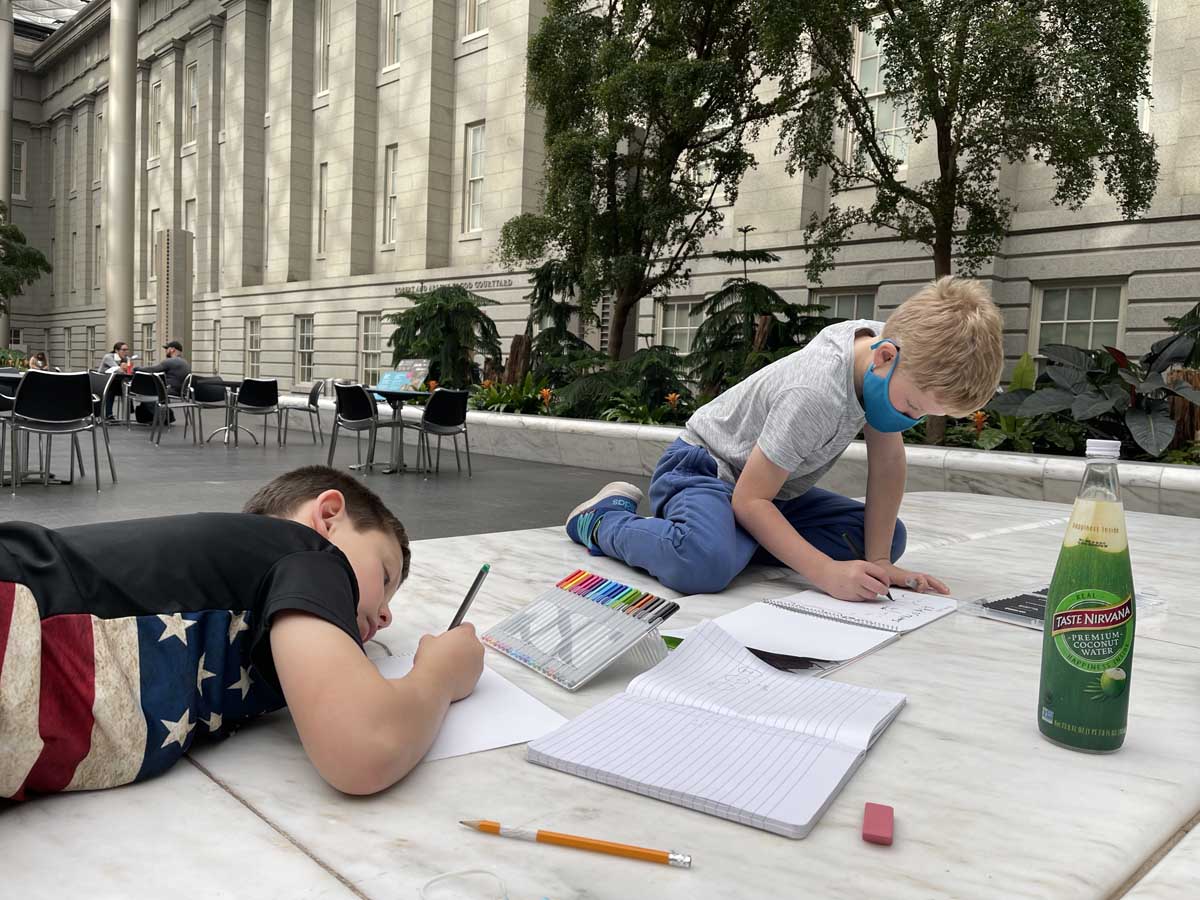
After drawing for a while, we went back into the portrait gallery and finished our walk through—this time moving into 20th century art. I asked them why the style of the portraits suddenly looked so different from the 18th- and 19th-century renderings that we’d seen earlier. They didn’t know. And then we began to see images that were different from everything that we had seen up to that point: portrait photographs. "Maybe," I wondered out loud, "the difference was technological advancement?" I asked them what people who made art might do when there was suddenly a tool that could represent things much better than could ever be drawn or painted. Give up, perhaps? No. Take a different approach. Maybe try to say more with less. Abstraction!
We looked at a variety of prints and paintings until settling on a portrait of the writer Jhumpa Lahiri. It was a comical sketch that caught the boys’ attention. I asked them to, again, look at the eyes. They were gigantic. What else was big? "The hands," they said. Right! And the head, too. And what does a writer use to do what they do? They think. They use their hands. They use their eyes. They use their brain. And that’s what the portrait artist was trying to give weight and importance to in this image: the hands, the eyes, and the brain of the subject. These things represented something important about what this person in the picture was all about. It all suddenly clicked together for Connor in that moment, and he stood there looking at that image for a long while. And, with that, we left.
On the way to the natural history museum, we happened to pass a Leica camera store, and I led the kids inside for a few minutes. I told them that photographic portraits like many of the ones that we had seen in the museum were often made with specialized tools—ones capable of creating the highest-quality images possible—and that these were the types of cameras that the artists used. The salesperson was extremely gracious, taking the time to explain the materials that the cameras were made from, the lens structures, f-stop characteristics, and other qualities that made them unique. It was a little unnerving watching the kids handle cameras that cost upwards of $8,000, but they did great. What a cool experience!
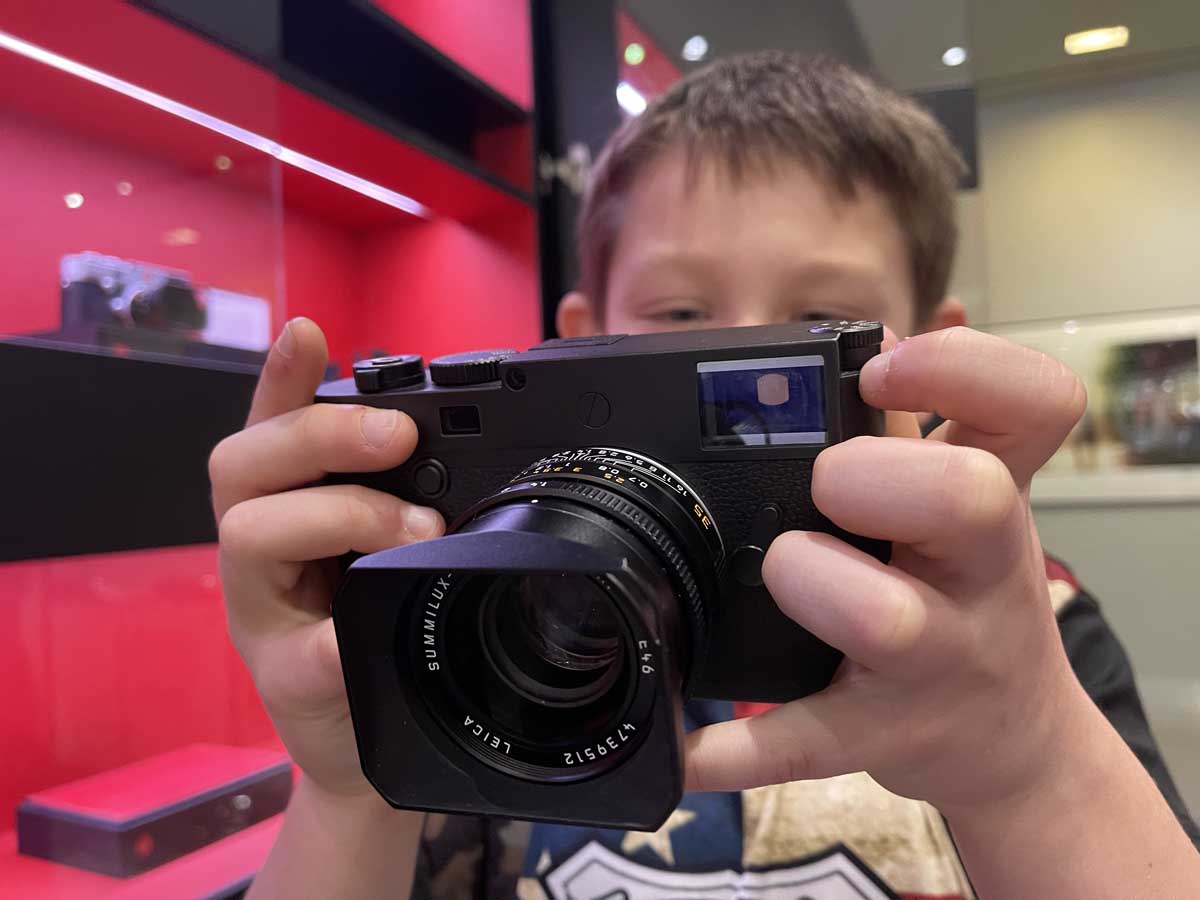
At the natural history museum, there were lines out both entrances that stretched across the plaza and then wrapped down the sidewalk in both directions. It might have been an hour or more just to get inside. The kids didn’t want to wait. I pointed them toward an outdoor sculpture exhibit at the National Gallery of Art. We spent a while walking on ledges and jumping over gaps, enjoying the warm fall sunshine, before turning back toward the car. Maybe we’d try the natural history museum another day.
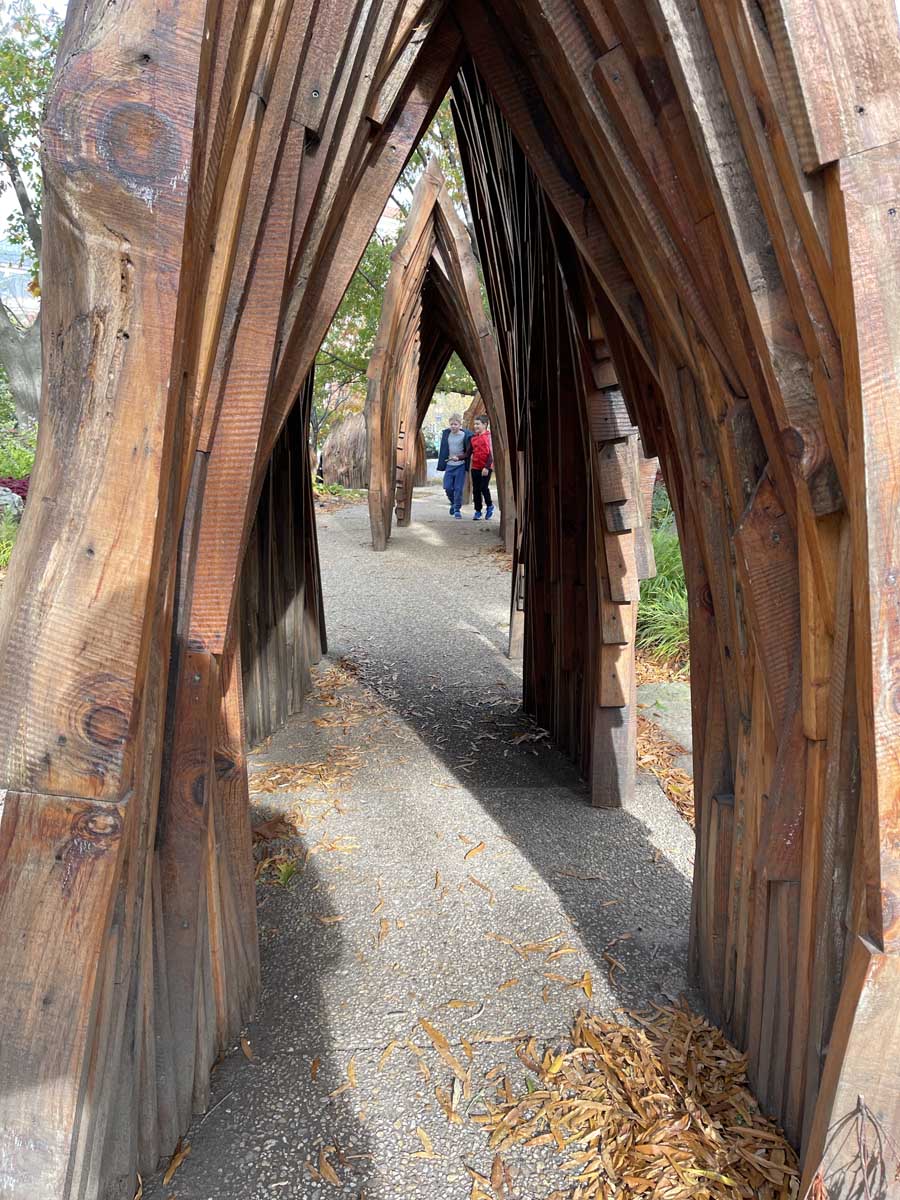
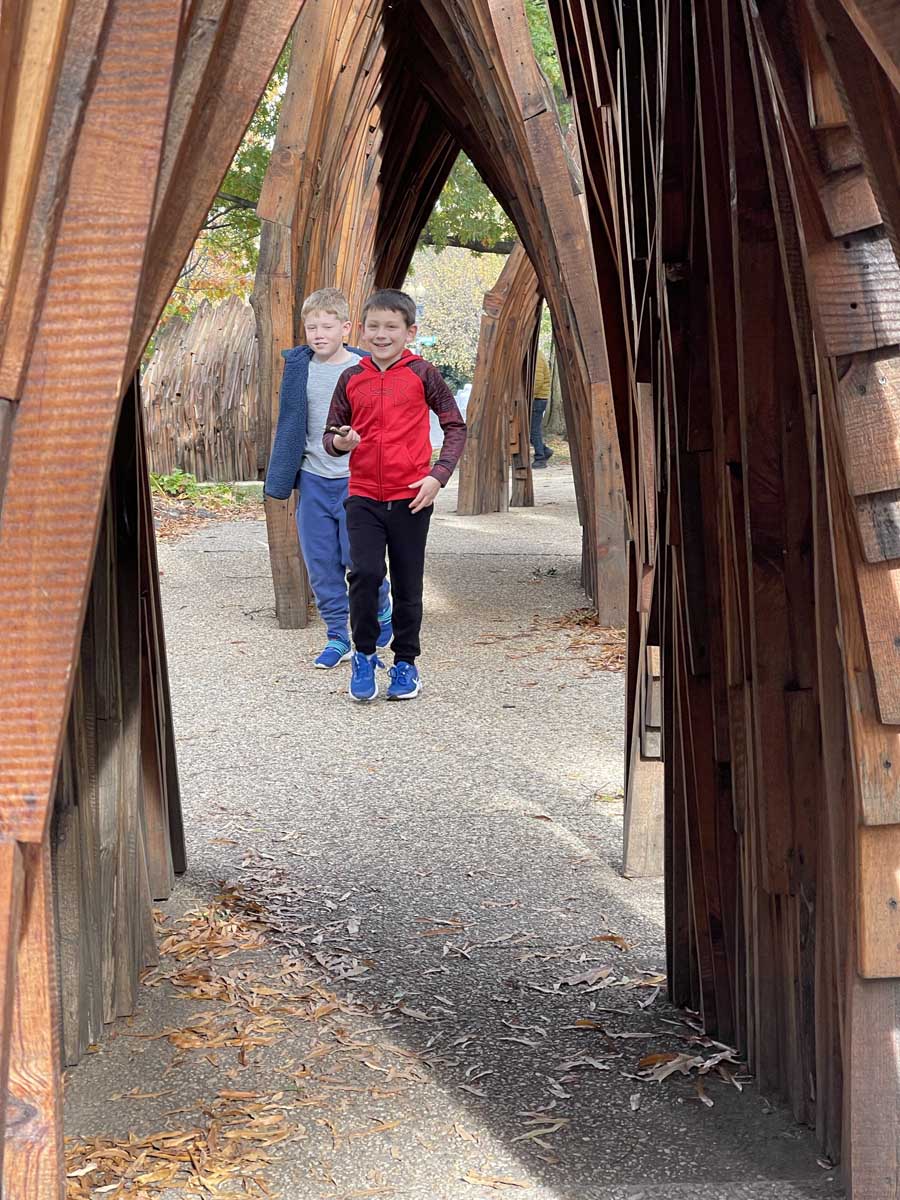
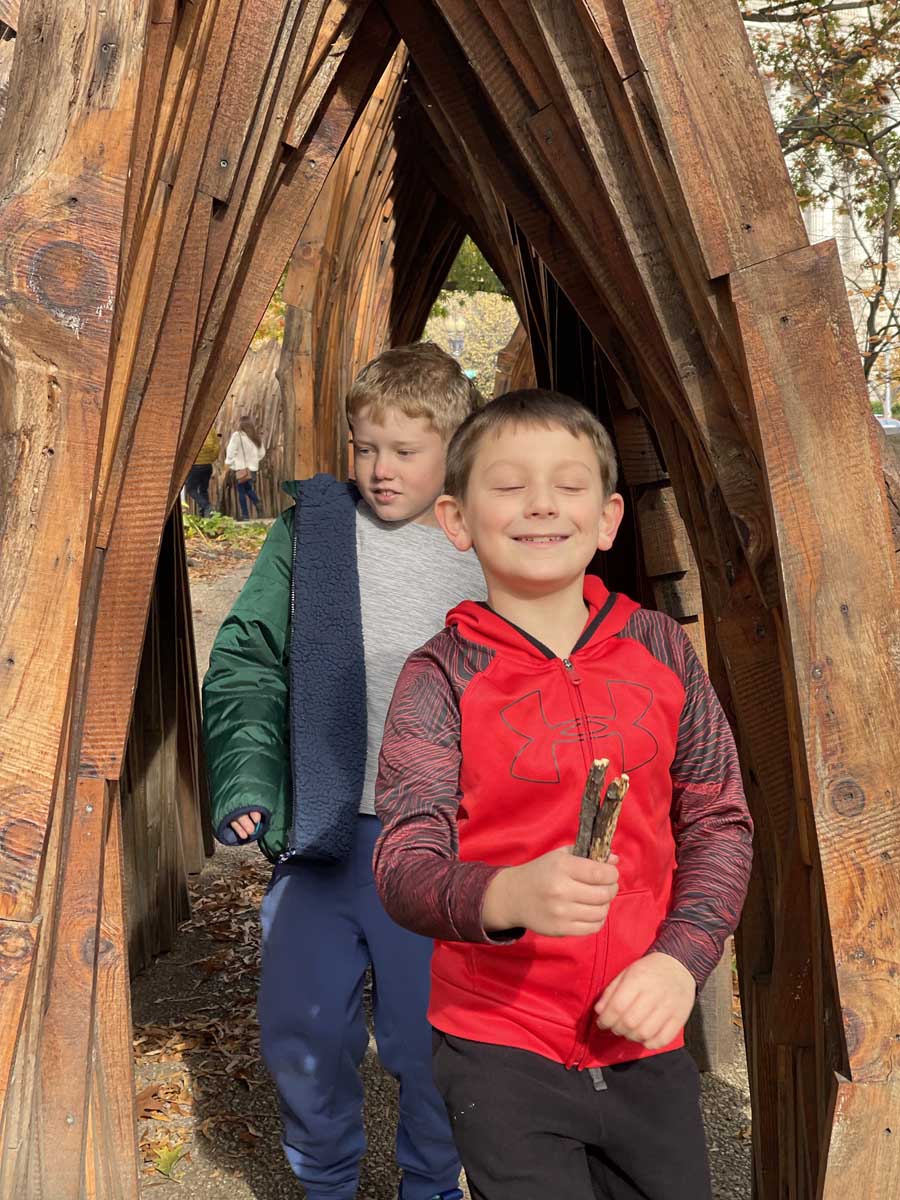
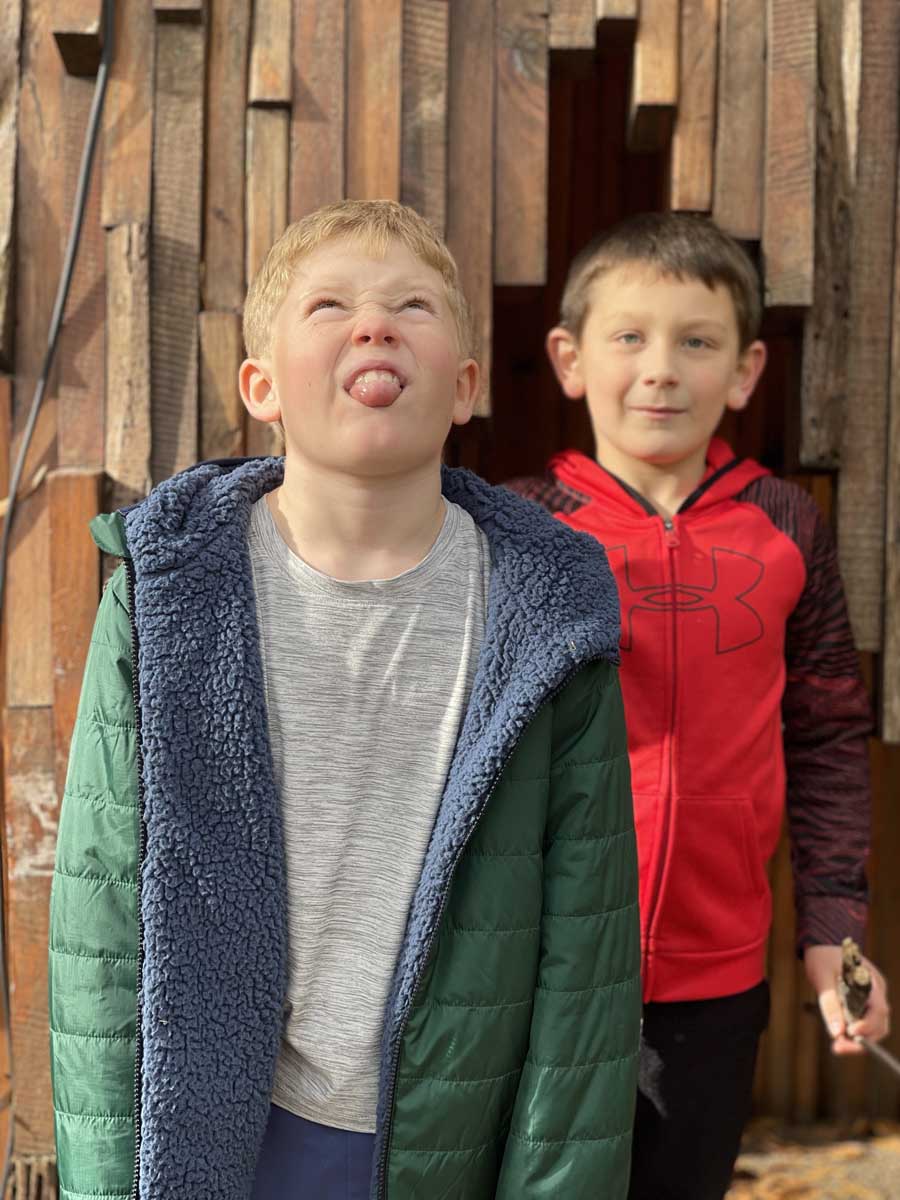
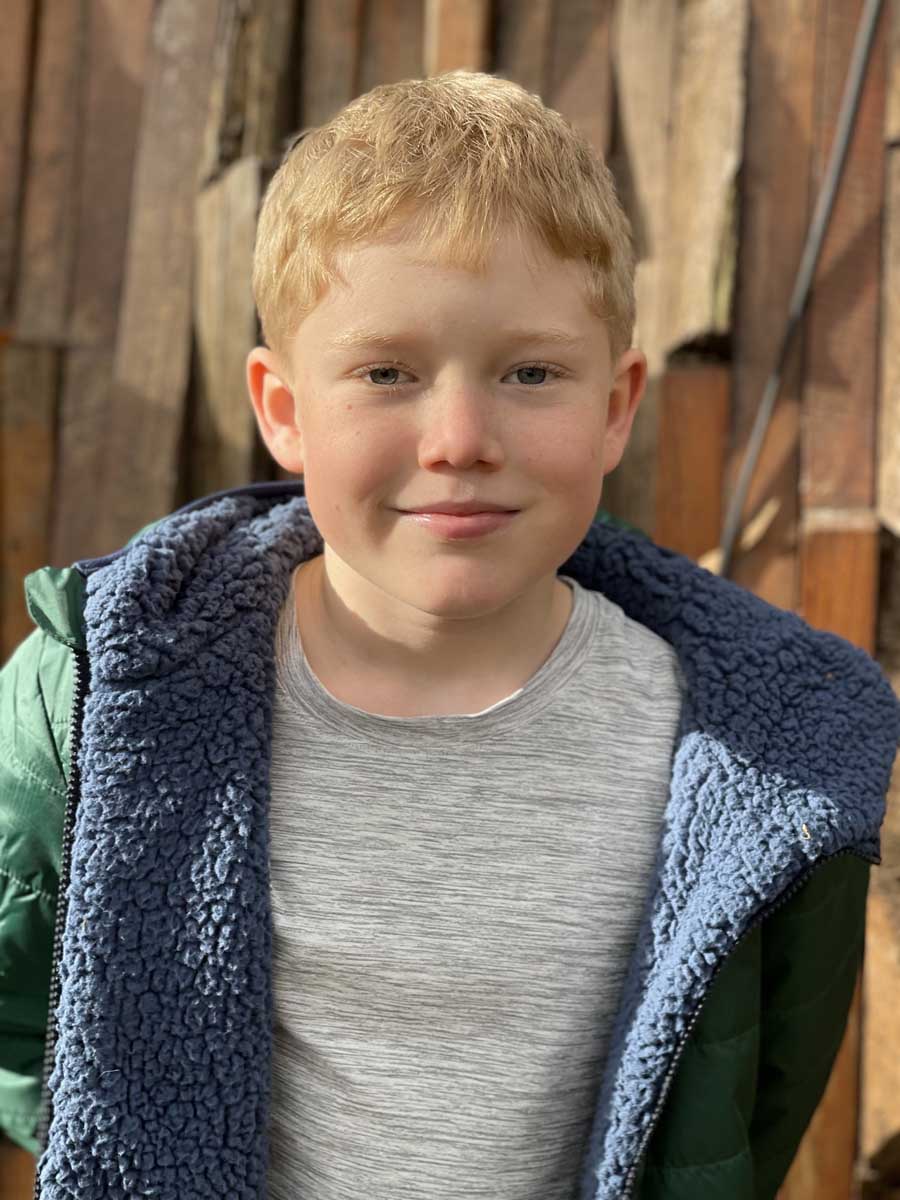
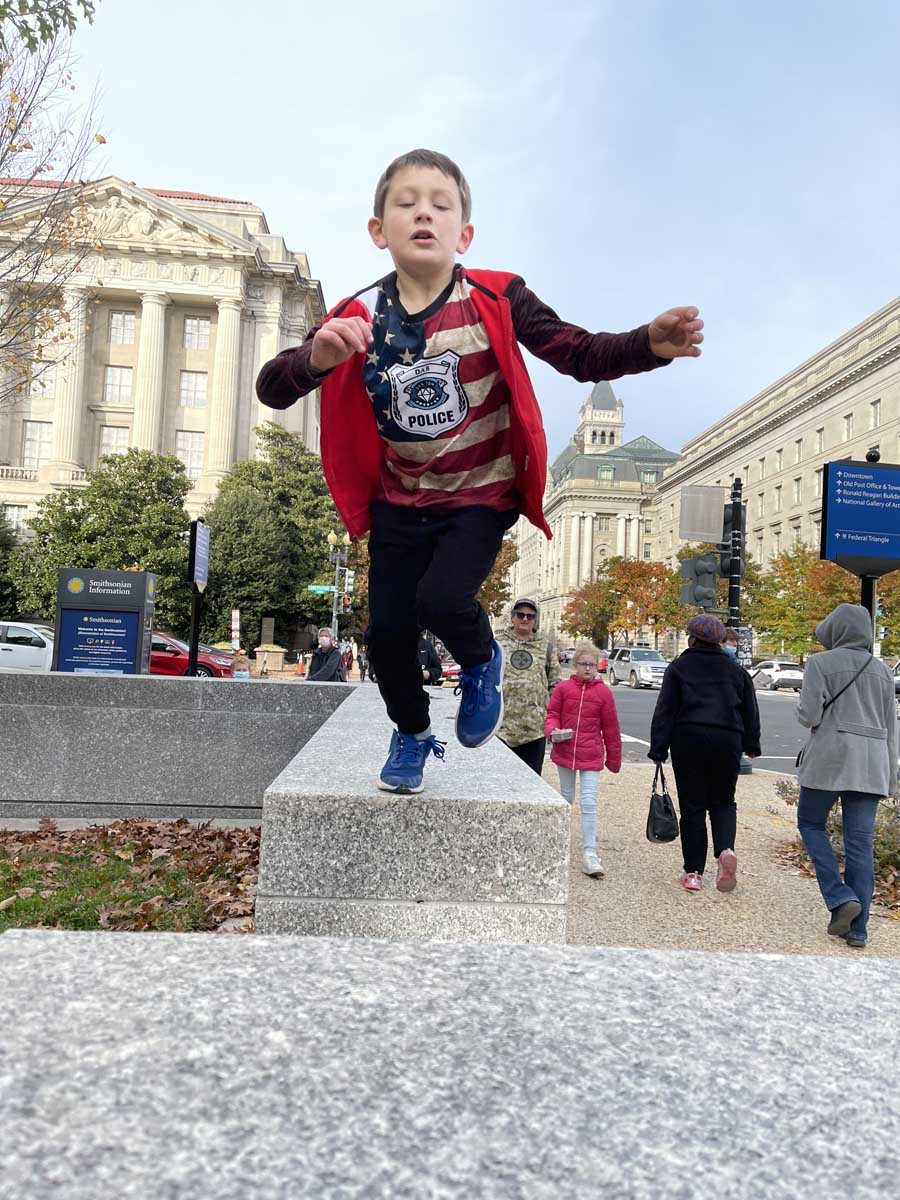
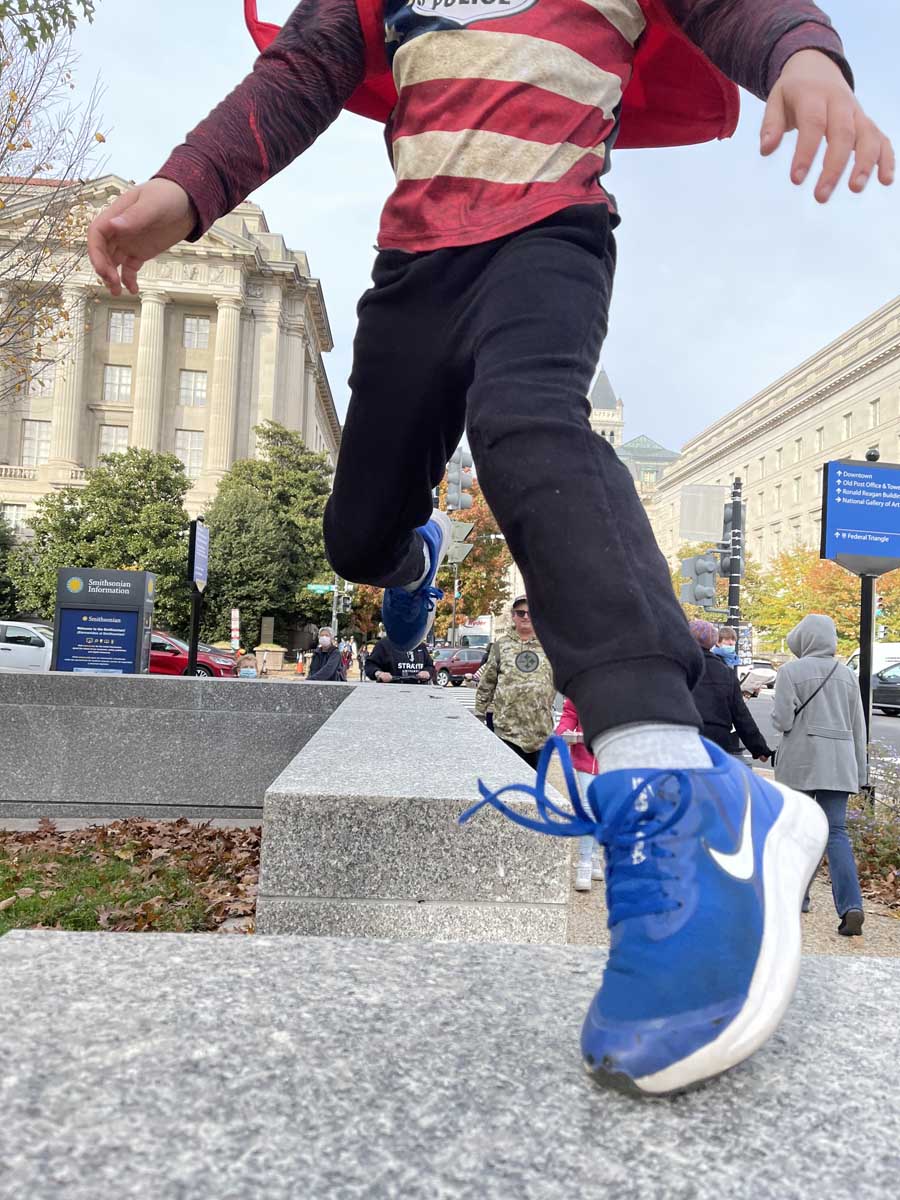
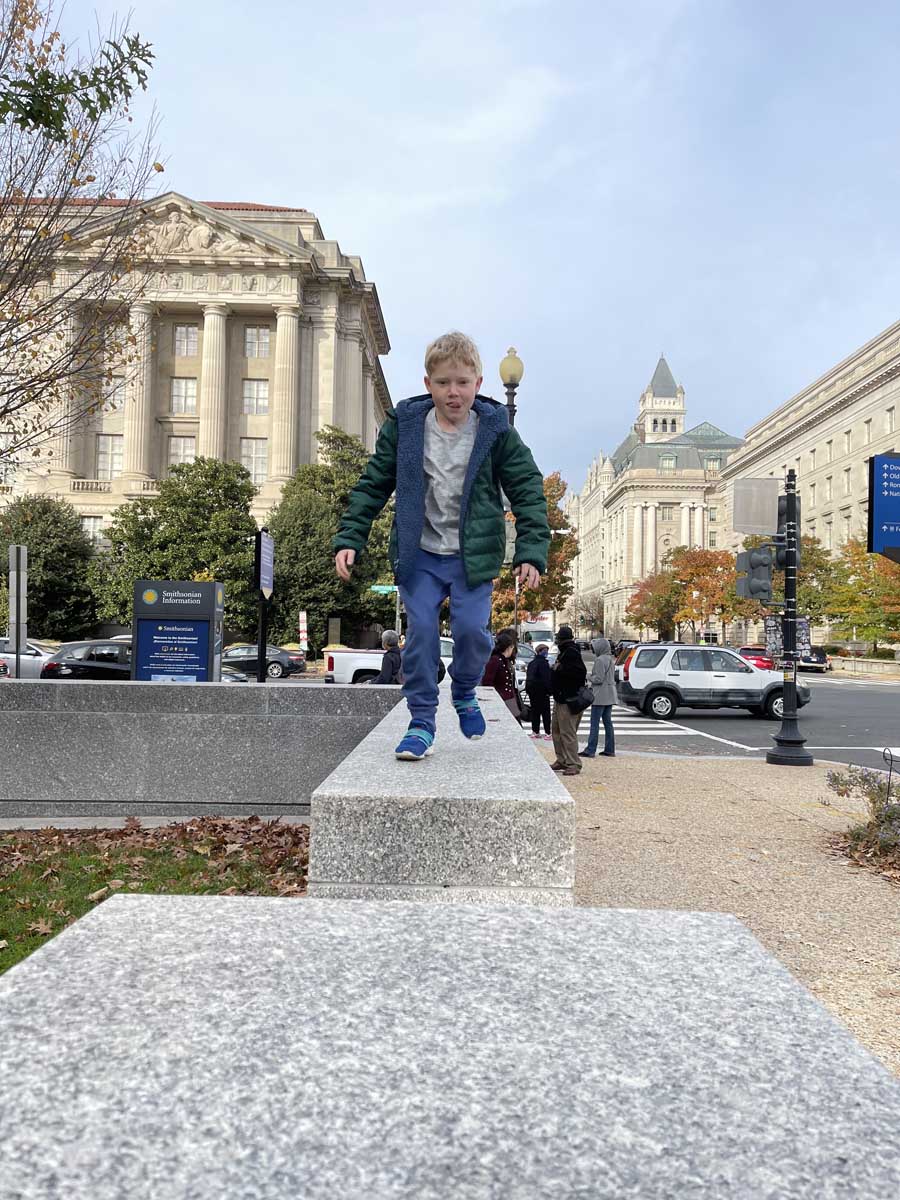
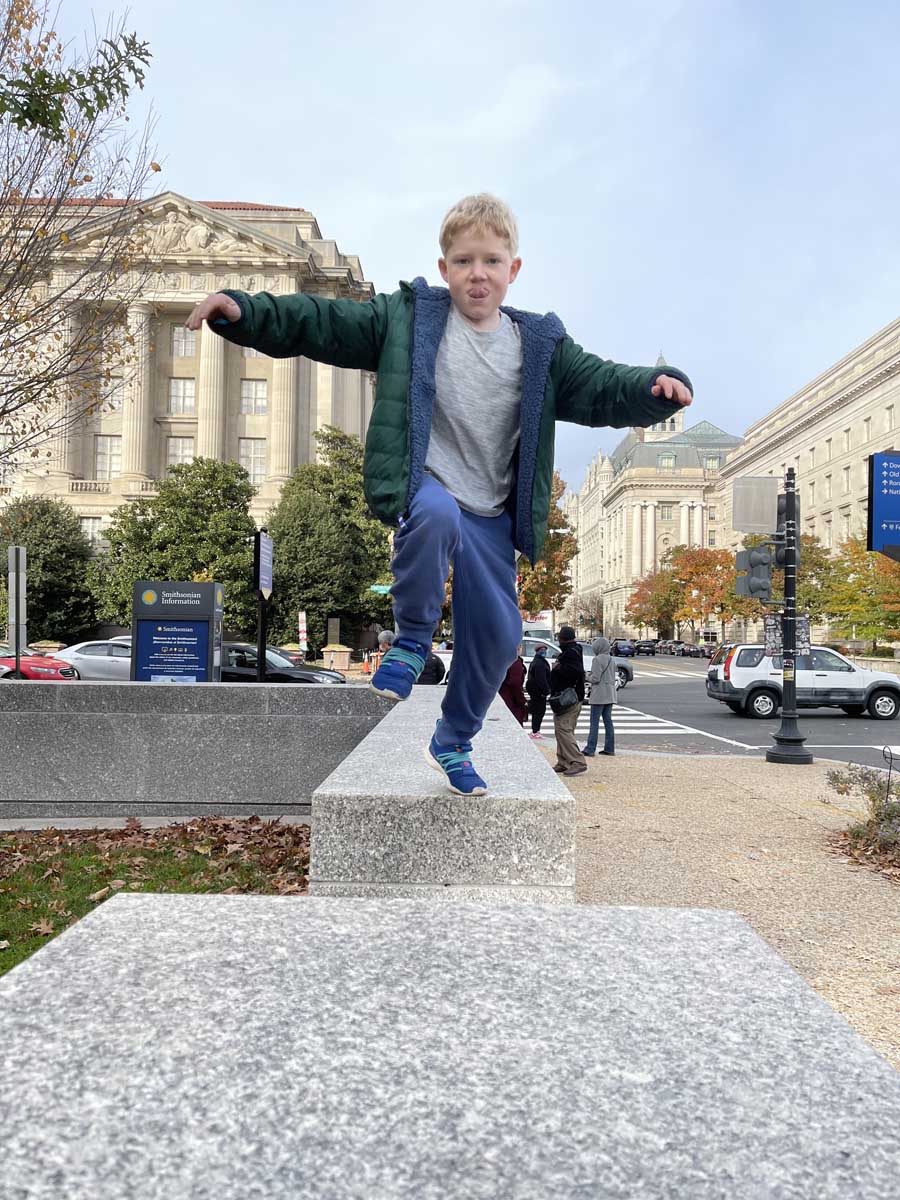
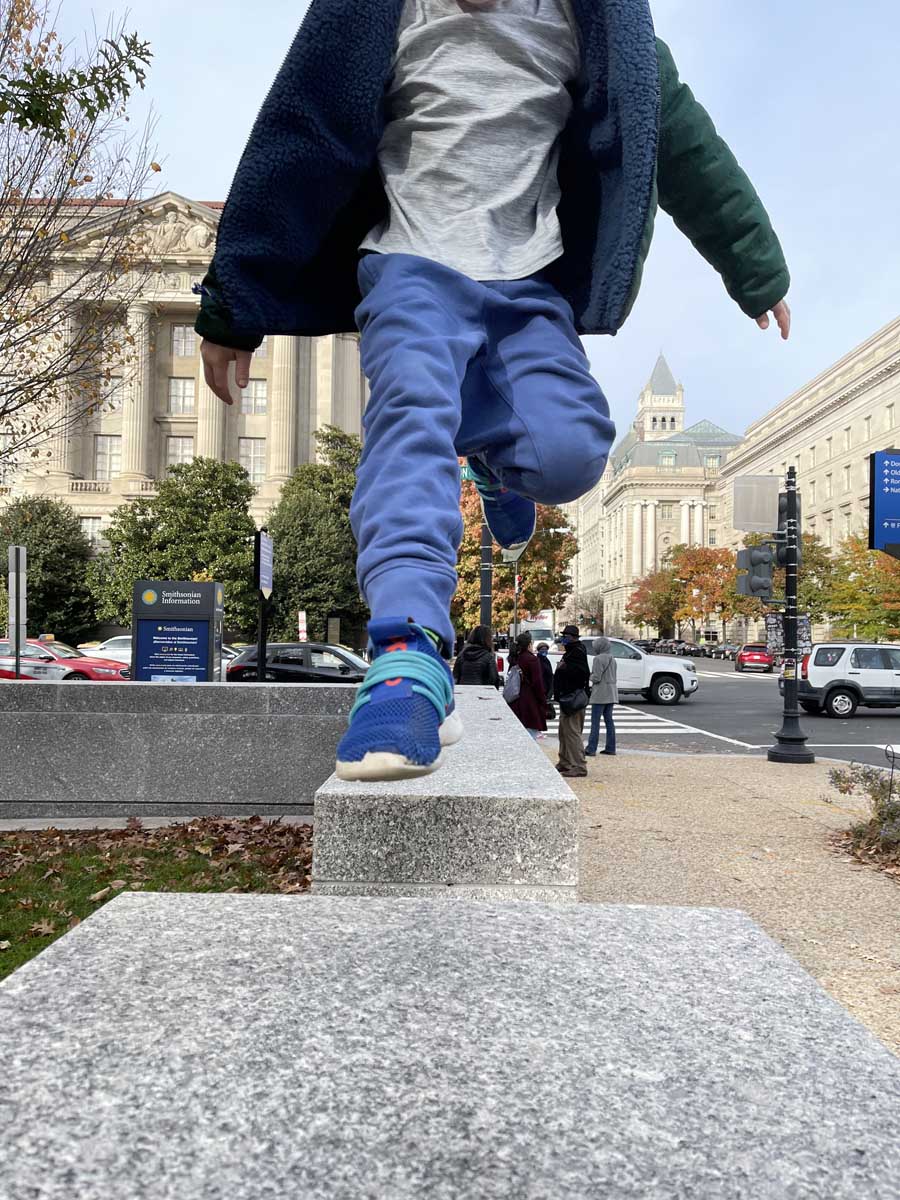
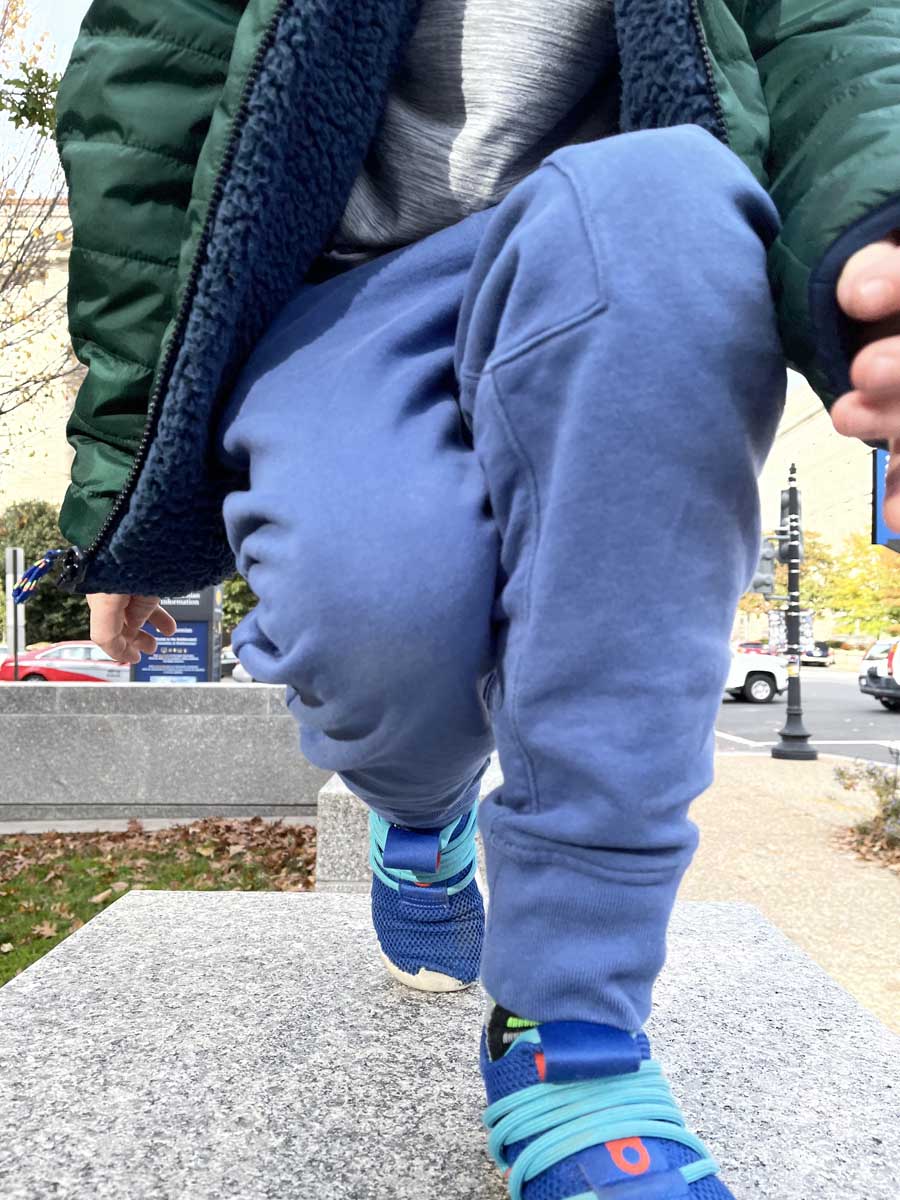
Next on the agenda was Chipotle for dinner but, on the way out the city, I swung over by Chinatown and took them to the Kung Fu Gift Shop, where I had bought some throwing stars for Connor for his birthday earlier in the year. They had no idea where we were going until after we had parked and we walked up to the shop. It was the kind of place that you wouldn’t know if it was open or if it had gone out of business years ago. Inside, it was disorganized and full of unpacked boxes and clutter and junk. I introduced them to the owner, an unassuming, 85-year-old Mr. Miyagi type of character who sat quietly in a corner near a hot plate and drinking tea. The kids marveled at all the martial arts weapons, arrays of knives under the glass counters, and all the things hidden at every turn. Connor’s friend, Owen, picked out a set of nunchaku. Connor chose a butterfly knife. We paid and said we’d be back again. The kids walked back to where we parked the car, in a terrible neighborhood which wouldn’t have completely surprised me if the windows had been smashed while we were gone. One thing was for certain, though: nobody was going to mess with a pair of nine year olds, one swinging nunchuks and the other causally flicking and twirling a butterfly knife open and closed as he walked.
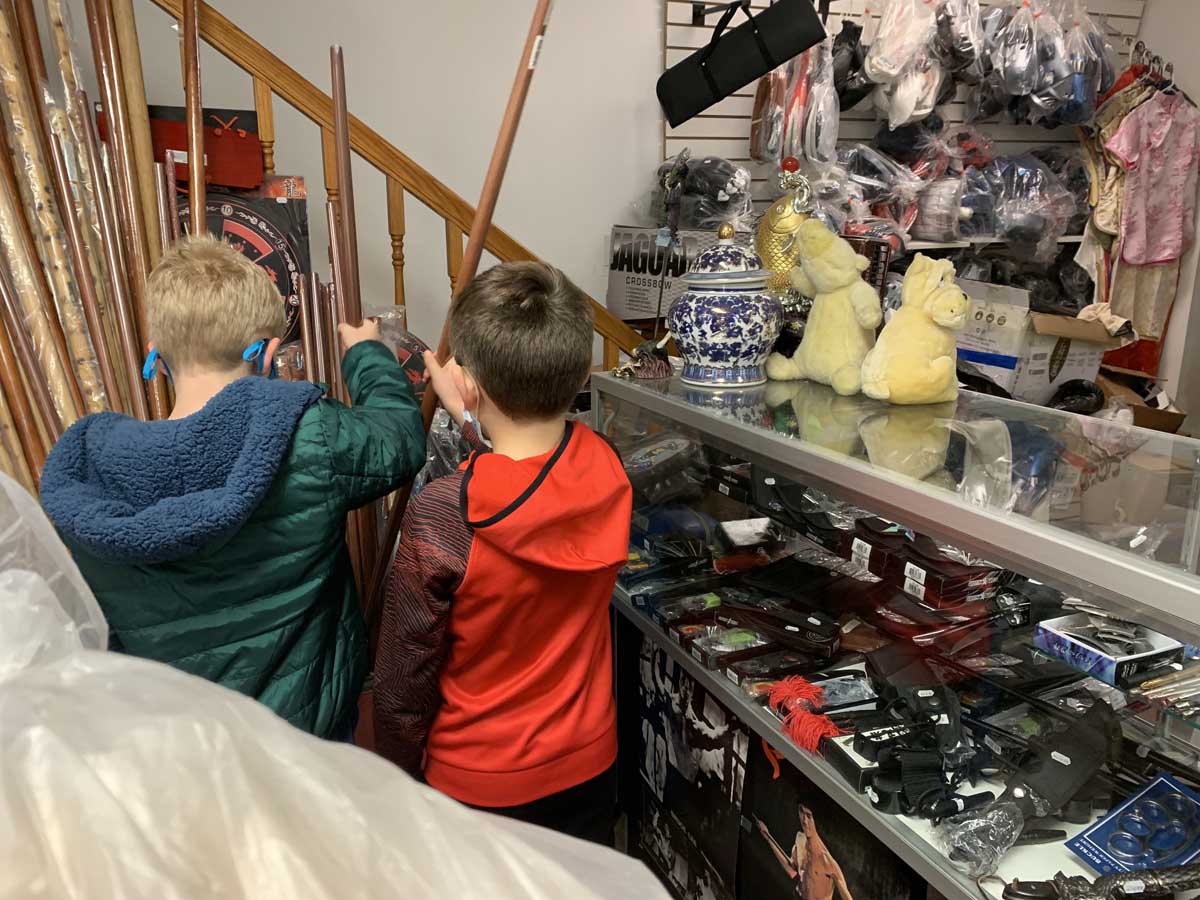
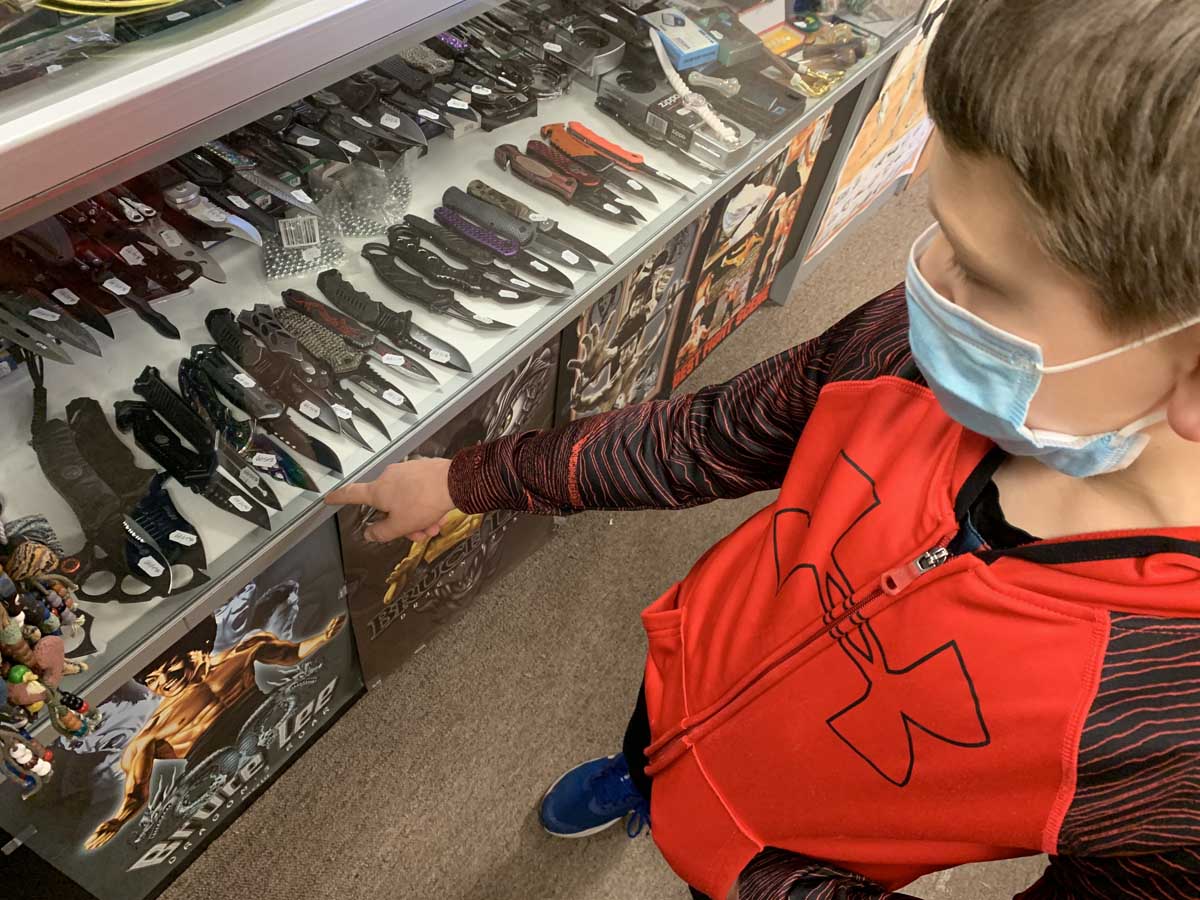
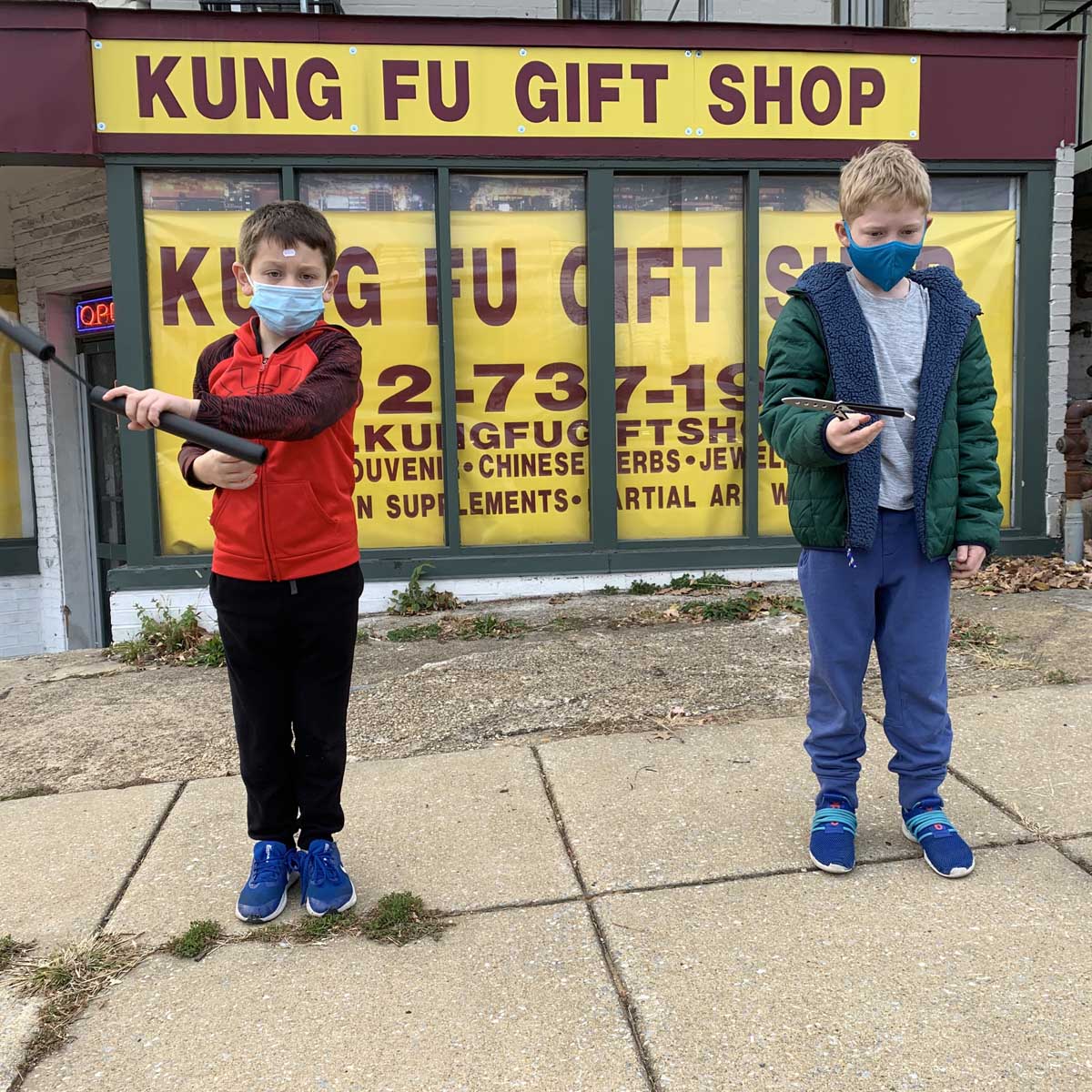
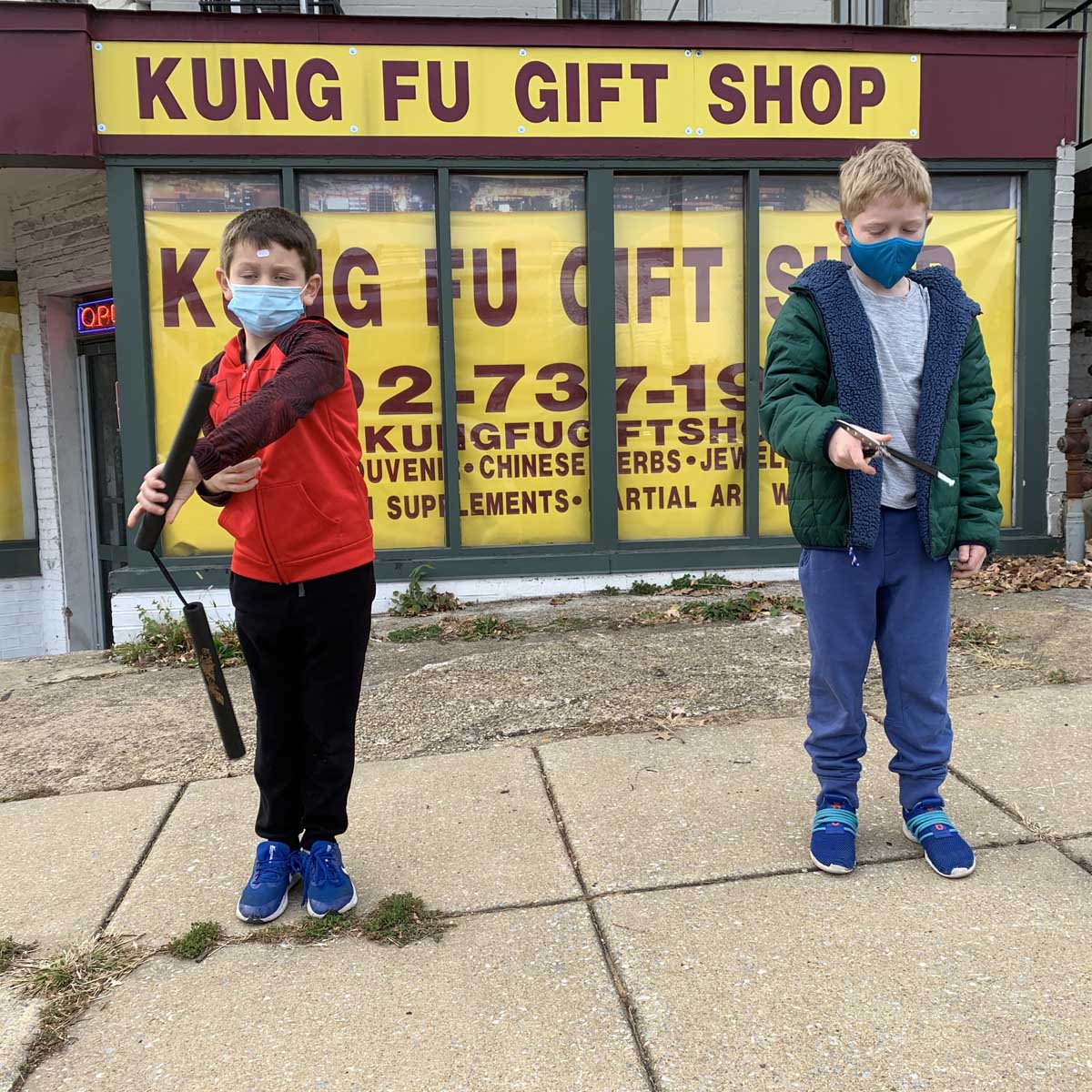
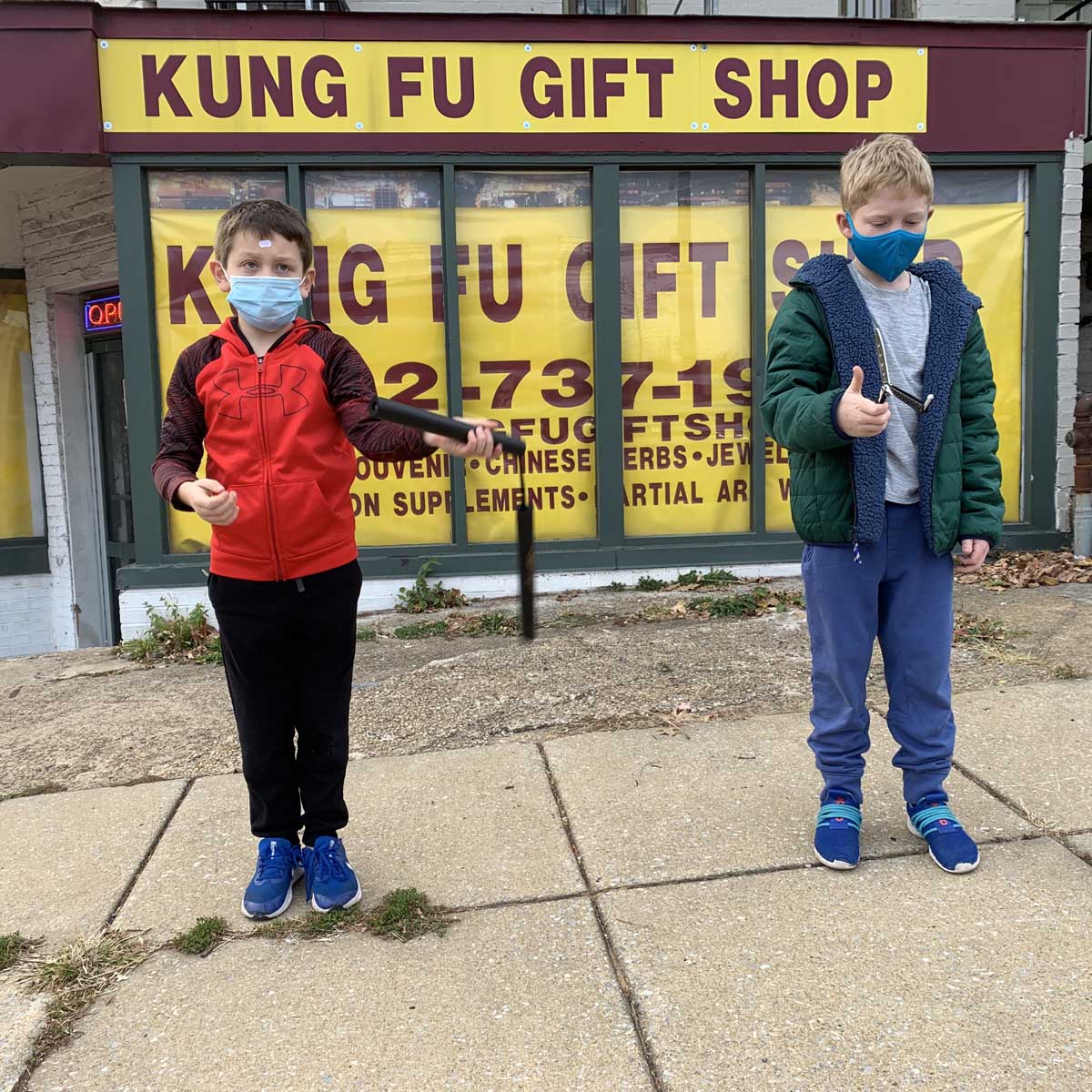
We grabbed dinner at Chipotle and then went to a coffee shop for hot cocoa and a little video game time before dropping off at home. (Minecraft Dungeons is the game that Connor has been playing lately.) It was dark and cold at that point in the evening, and we had nowhere else to go, but it was also a great way to wrap up the day.
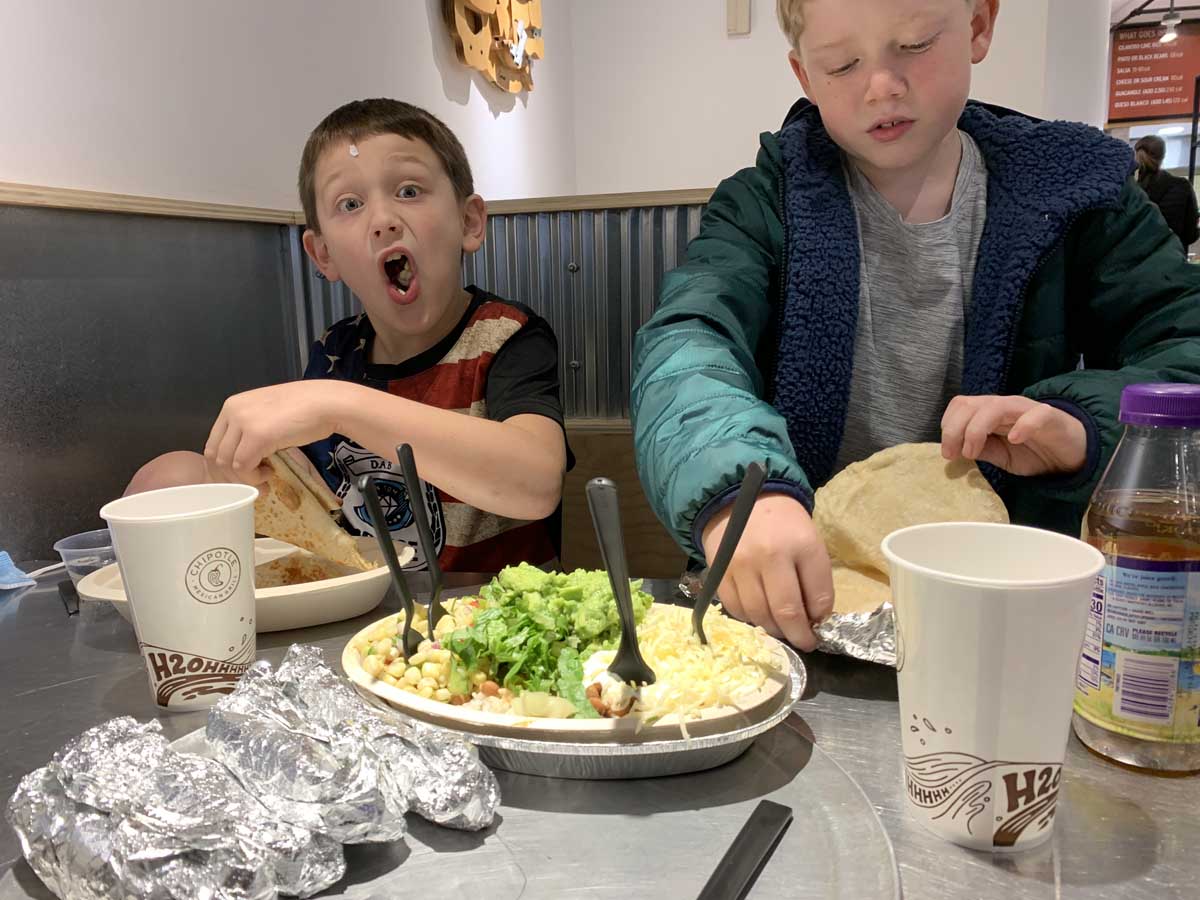
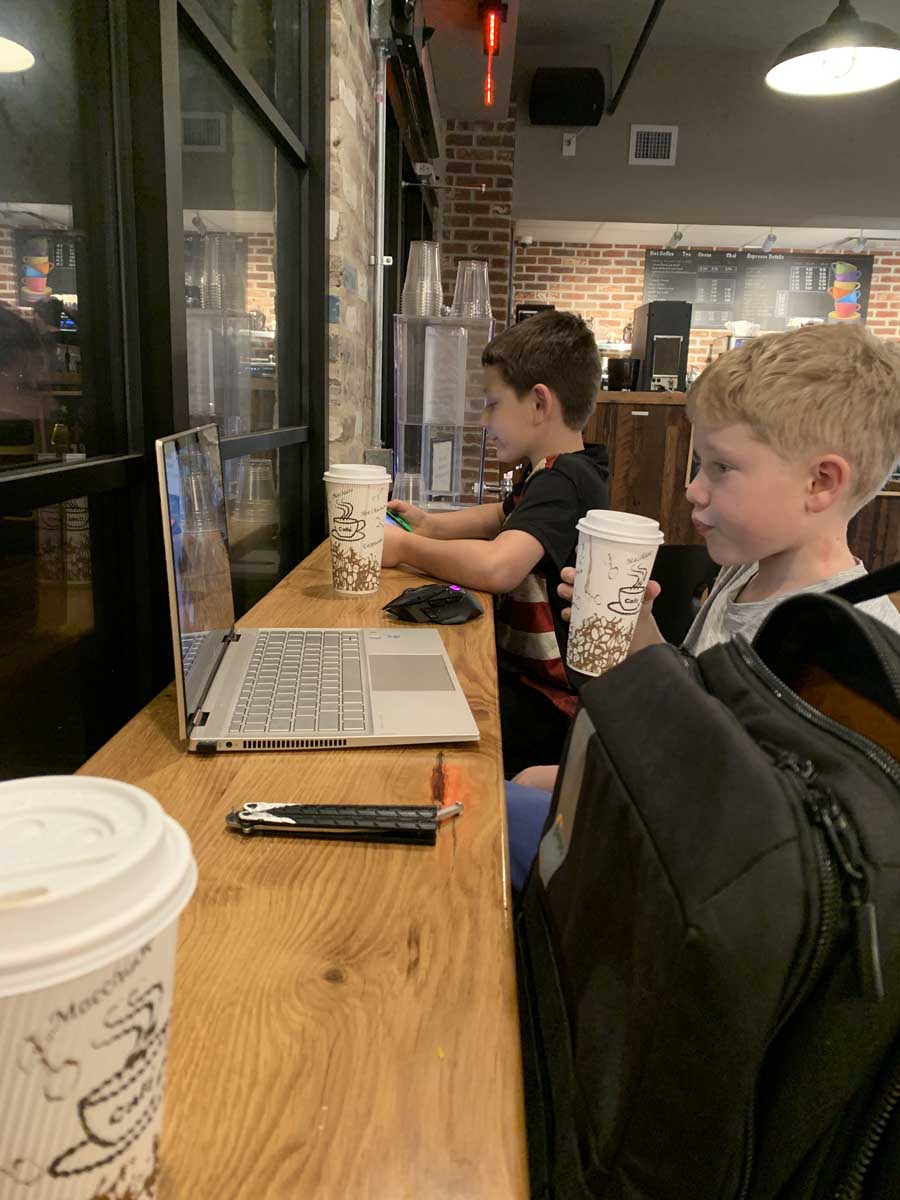
If you made it this far, I hope you enjoyed, and thanks for reading.

